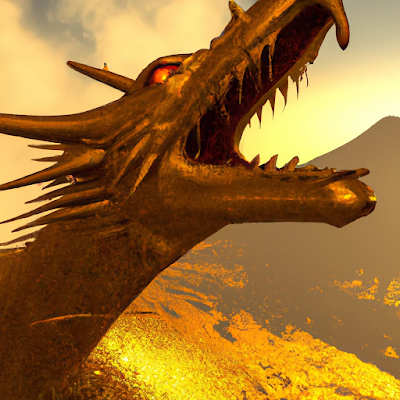What Is Going On Here
Early in December, Sean McCoy, creator of Mothership, proposed a challenge: 365 rooms and 12 levels of a megadungeon as a day-to-day journaling/creation project.
I have a great affection for megadungeons. I have run them: a modified Caverns of Thracia sat at the heart of the beginning scenario in the five-year D&D game I ran, which ended earlier this year. And I have created some as well (although not finished them; more on this later).
Megadungeons trace a path straight back to the origins of the hobby. They tell strange, hidden, incomplete stories. They are surprisingly malleable and can facilitate different types of play, in place of (or in addition to) the classic crawl. They still loom large in popular culture beyond D&D; “Souls-like” and “Metroidvania” videogames are in many respects driven by the same principles (and tapping into the same excitement) that animated the first megadungeons 50 years ago.
Every fantasy RPG should have a megadungeon somewhere within it, and many games beyond D&D could benefit from a megadungeon or megadungeon-like space within their worlds. So we will create a Dungeon23 megadungeon, and we will start on January 1st. How will this work?
Dungeon Principles
A rough draft (until it isn’t). Other Dungeon23 participants have invested in fancy notebooks, written extensive background information, and created elaborate art for their project. This is great, and I salute their respective processes; but mine will be different. For me, a day-to-day project should be part rough draft, part sketching on a bar room napkin, part scrapbook, part Pepe Silvia diagram. I want to start with the humblest of possible beginnings. We’ll leave room for the loftiest of ambitions, but those ambitions aren’t helpful to getting started, and indeed are the most likely early stopping point.
Falling behind (and catching up). Rigid every-day schedules are the bane of new year’s resolutions and shared creative projects alike. We’ll endeavor to form a rhythm when possible, but we forgive ourselves in advance, understanding that the first lapse doesn’t kill the whole project, and a burst of energy that populates a week’s worth of rooms in an hour won’t be the norm.
Use the generator (then refuse it). Our random generator (see below) is a valuable tool, but it merely advises us. We can reject, invert, contest, and contort its advice at any time.
All misfit toys are welcome. No failed campaign notes, unused session prep, or aborted Itch.io publication is ever wasted so long as it could still rise again, animated by dark necromancy, to become part of a new project. One or more of my past projects will surely be absorbed into this process.
System and setting agnostic (until it isn't). I think this will be in some sort of D&D milieu, and I will probably use (and advance) the stat block principles I've talked about previously, but this is also intentionally fuzzy at the outset.
Grappling with Physical Media
I normally create everything digitally. In the spirit of this project and in the interest of shaking the routine tree to see what comes loose, I’m going to do this by hand (to start… we’ll see…) After all, actually using a few of these notebooks that have been living in (colonizing?) my house for years is part of the appeal of doing the project. I’m going to start with this nice, concise 48-page graph paper memo book. We’ll reassess as we go if it's working or not.
I have terrible handwriting. I’ll consider if/how to address this issue as I go.
My one new expenditure is a tiny printer capable of producing really small adhesive images (think passport photo-sized). This should add some color and texture to the project that would otherwise be missing. We’ll revisit our physical tools as we get deeper into the process.
Mighty Generator, Guide Our Hands
A good generator or random table can express universal themes while also providing a reasonable amount of unpredictability. We’ll hit the generator to start most entries; some days will require banging our head against the enter button until something legible emerges. On other days, room after room will come into focus seemingly without our intervention.
The generator can also be part of a positive feedback loop. When we find particularly resonant ideas within its output, some of those terms, words, and concepts will go back into the generator, further reinforcing our themes.
Sources and Inspiration
Courtney Campbell’s Tricks, Empty Rooms, and Basic Trap Design, an update/commentary/expansion on Gygaxian AD&D 1E dungeon design, is a great resource, and informs some of the language in our generator.
We’ll be using the generator not (only) as a machine producing discrete dungeon rooms, but also as an abstract oracular tool. The generator can answer questions that go way beyond the contents of a room or the nature of a trap, if we read deeply enough into the meaning behind the results. The concept of universal tables and generators has no single originator, but this blog post is one of my favorite implementations.
In the same vein, the D6 universal resolution of yes/no questions in the generator comes from Dreaming Dragonslayer, although as they note in the post, the same idea has been created independently more than once.
Next week: Well Begun is 1/365 Done






